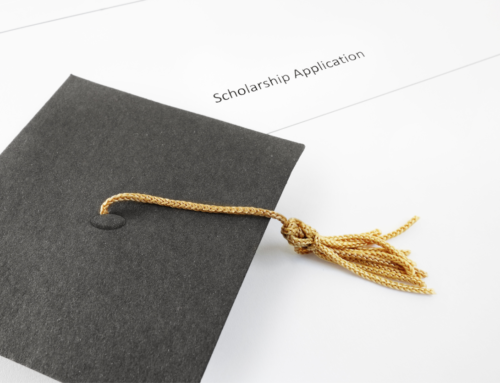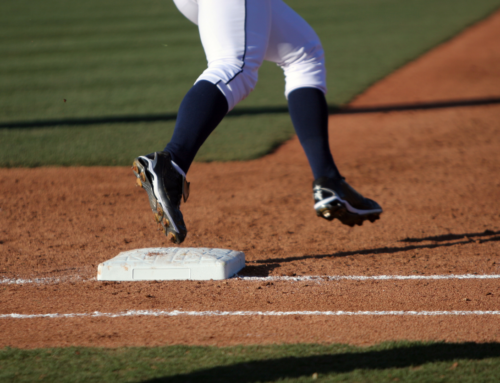What you need to know before you go to bat in the recruiting process.
Thanks to media attention, most everyone is familiar with how the college football or basketball recruiting process works. But if you want to pursue a college baseball scholarship, you’ll face a completely different process with several different variables at play. So, to help you better manage the recruiting process, be sure to familiarize yourself with these five key things to know about baseball scholarships:
• Full-Ride Baseball Scholarships Are Rare
Given what they see of football and baseball, many people believe that full-ride scholarships are the norm for college baseball too. However, while football and basketball are considered headcount sports by the NCAA, baseball is an equivalency sport and as such, each Division I team is only allotted 11.7 scholarships. However, as college baseball teams average 36 players or more, most coaches work to award partial scholarships to more players instead of committing the bulk of their scholarship money to full-rides for fewer players.
In short, full-ride college baseball scholarships are the exception, not the norm. And that means, if you’re counting on a full-ride baseball scholarship to pay for your college education, you’ll likely need to be one of the top prospects in the country. If you’re not, you’ll likely need to pay for some of your own college education or have the grades to earn an academic scholarship or some other form of grant or financial aid.
• The Only Certainty Is Uncertainty
As mentioned above, some top baseball prospects do receive full-ride scholarship offers. However, many of those prospects simply use those scholarship offers as a safety net or bargaining chip to use based on where they’re selected in the Major League Baseball draft. To make things even more confusing, while many baseball prospects are drafted straight out of high school, those who choose to play ball at a four-year college can’t be drafted (or drafted again) until three years after their college enrollment or after their 21st birthday. However, junior college or community college players are eligible to be drafted at any time.
All of this is to say that college baseball scholarship offers and college baseball rosters are in a constant state of flux. A prospect with a full-ride offer from a given school may choose to go pro. That team’s coach may then choose to divide the one full scholarship into partial scholarships for several players. Or a team with all its scholarships allotted may suddenly have several available after players are drafted or transfer. In another scenario, several top JUCO players can enter the draft or transfer to four-year programs. The point is if you’re having trouble landing a baseball scholarship, just remember what Yogi Berra may (or may not) have said: It ain’t over until it’s over.
• Camps, Tournaments, and Showcases Can Raise Your Recruiting Profile
To increase your chances of earning a baseball scholarship, you need to be seen by more coaches. And if you’re trying to get yourself on more coaches’ recruiting lists, the right baseball camp, clinic, tournament, or showcase can put your skills front and center. To choose the camp or event that’s right for you, look for events hosted by college coaches. Assess whether you have the skills and desire to play at that school. If a coach has made contact with you or your parents or personally invited you to their camp or clinic, they’re likely interested in you.
For showcases or combines, consider how you’ll match up with the other participants as well as what coaches will be in attendance. For select tournaments, make sure you won’t get lost in the shuffle of the other players and, if you do make contact with a coach or coaches, remember it’s on you to follow up with them.
• Junior College Baseball Can Be A Great Option
Whether it’s bad grades, a lack of higher division scholarship offers, or simply as a stepping stone to a higher level, thousands of high school baseball players choose to play for junior college programs every year. Part of that may be the fact that a junior college may have a maximum of 24 scholarships for an average roster of 23 players. But regardless of the reason, many JUCOs offer great baseball programs that can offer you plenty of high-end competition and playing time, as well as an opportunity to earn a two-year degree and then step up to a higher level.
• Academic Scholarships Can Work Just As Well As Baseball Scholarships
Consider that in the NCAA’s Division III, there are 393 schools offering varsity baseball with more than 14,000 student-athletes participating. That’s more teams and players than any other college baseball division or level. And, because Division III schools don’t offer athletic scholarships, none of those 14,000-plus DIII baseball players have a baseball scholarship. However, many DIII schools do have plenty of academic scholarship money to offer, as well as the lure of a more balanced academic/athletic student life. And, as one of those academic scholarships can cover some or all of your college costs, a Division III baseball program may present a better opportunity than a higher-level program. The key to unlocking that opportunity is to focus on your grades as much as you focus on your fastball or batting stroke.
Baseball recruiting can be confusing and earning a scholarship can take work. But now that you know some of the basics of the baseball scholarship process, you’ll be ready to step up to the plate to find the school, and program, that’s right for you.
Did you enjoy the article ‘5 Keys To A College Baseball Scholarship’? If so, check out more of our articles HERE.





